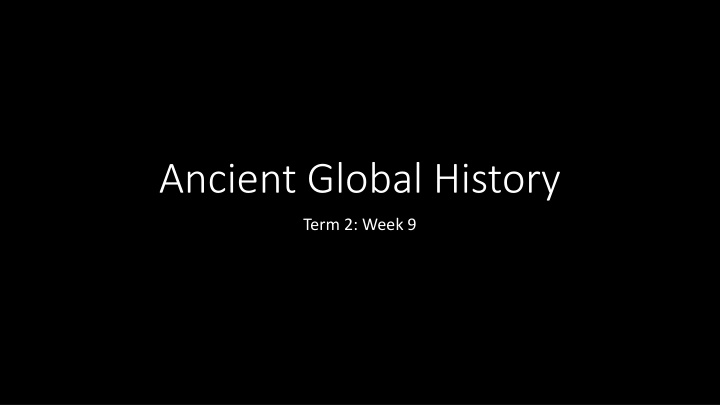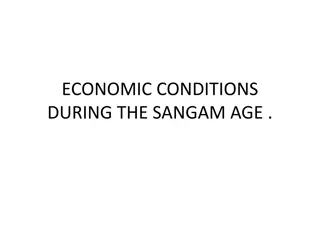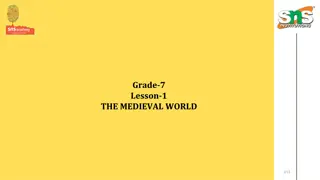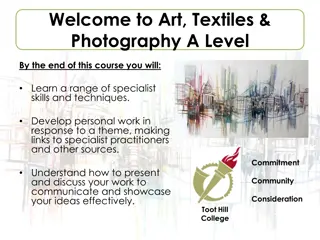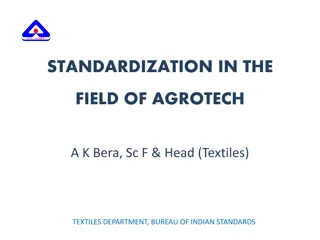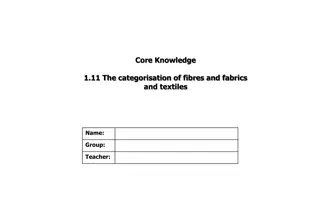Ancient Global History - Textiles, Burials, and Coins in Ancient Palmyra and Tillya Tepe
Explore the fascinating details of ancient silk textiles found in Palmyra, the intriguing burials at Tillya Tepe in Afghanistan, and the historical significance of coins in Central Asia - shedding light on the interconnectedness of cultures in ancient times.
Download Presentation

Please find below an Image/Link to download the presentation.
The content on the website is provided AS IS for your information and personal use only. It may not be sold, licensed, or shared on other websites without obtaining consent from the author.If you encounter any issues during the download, it is possible that the publisher has removed the file from their server.
You are allowed to download the files provided on this website for personal or commercial use, subject to the condition that they are used lawfully. All files are the property of their respective owners.
The content on the website is provided AS IS for your information and personal use only. It may not be sold, licensed, or shared on other websites without obtaining consent from the author.
E N D
Presentation Transcript
Ancient Global History Term 2: Week 9
Silk in Palmyra Silk in the Tombs of Palmyra 1931 G F Hudson there is no evidence that there was ever in the Roman world a taste for Chinese patterned silk Europe and China 1931.91. 1933: Palmyrene tombs discovered. How can this be identified definitively as Chinese silk? Weave? But lots of different weave style existed in China Design? See Fragment S9 (Pfister Fig. 10/Pl. XI) Design has been argued to be Parthian and to be Chinese (concentric circles with dots, crested tigers with thin necks, zigzag lozenges) Resemblance to fragments found elsewhere (e.g. Loulan from 1stc CE cat no. LC VII 09): Pfister 1941.77. See Kat 521: a mix of scenes / origins / influences? Chinese characters: see von Falkenhausen article. 25-220 CE: 30 pieces of silk with Chinese character surviving at Palmyra Scientific analysis of silk fibres: can prove it comes from cocoon secretion of mulberry leaf moth (which in the period 1-3rdc CE means China) For Bibliography: Schmidt-Colinet, Stauffer and Al-Asad (eds) Die Textilien aus Palmyra: Neue und alte funde 2000 Pfister Les soieries Han de Palmyra Revue des arts asiatiques 13.2 (1941) p.67-77 Maenchen-Helfen From China to Palmyra Art Bulletin 25 (1943) p.58-62
Schmidt-Colinet and Stauffer 2000 Kat 290 (Taf 96-7), found in Tomb 65: Woven using Chinese techniques Depicts central Asian scene (men harvesting grapes with camels (?) in background
Tillya Tepe Burials (Afghanistan) 7 graves (6 excavated, 1 robbed) found at Tillya Tepe ( Golden Hill) near modern city of Shibergan in NW Afghanistan (1969) Local aristocracy/ royal family hastily reburied (?) in abandoned fire temple sanctuary Most of items are of personal ornament (not funerary offerings), with 2 crowns set on heads of 2 deceased. Coins found in graves date burials at 1stc CE See Sarianidi article (excavator) The Treasure of Golden Hill AJA 84 (1980) p.125-131. Compare Boardman The Greeks in Asia 2015.109-115 Specifically compare reactions to Dionysus and Ariadne
Coins in central Asia: changing allegiances (cf Rabatak Inscription in Greek and in Bactrian) 127 CE: early issue King Kanishka Crowned, diademed king, holding spear and sacrificing at altar Greek script: King of Kings Kanishka Kushan Obverse: Helios, one hand on hip, one raised in blessing + Kanishka s emblem. Greek writing Helios 128-150 CE Crowned Diademed King, holding spear and sacrificing Bactrian script: King of Kings Kanishka Kushan Obverse: Buddha with emblem of Kanishka Bactrian legend: Budda
Gandharan Art Heracles and the Lion (stone weight 1st century CE) Compare Boardman The Greeks in Asia p. 189 with Art of Gandhara in the Met Museum of Art p.13-4
The Sampul Tapestry Found in Tarim Basin, at Sampul (modern Xinjiang province) in1983 Left decorative border of a larger wall hanging Later this piece fashioned into pair of trousers Made of wool, 24 threads of various colours A man (warrior with spear). Wears tunic with rosette design. Head band (diadem?) Above him centaur, playing a horn, wearing a cape. Surrounded by floral ornaments Has been argued to have been made in Rome, in Greece, to depict Alexander the Great, to be from central Asia See description in China: Dawn of a Golden Age 200-750 AD Met Museum of Art (text by Zhao Feng) General editor: J. Watt 2004
Buddhist Art / Architecture For discussion: The development of the Chinese pagoda from the design of the Buddhist stupa: Great Wild Goose Pagoda built in 7th century to commemorate return of a Chinese buddhist monk from India (and house relics and manuscripts brought back by him). Many argue that Pagoda is fusion of Buddhist stupa (round) with Han-era watchtower
Dunhuang Caves (Mogao caves/Thousand Buddha Grottoes) Architecture: First cave built second half 4th c CE. Early caves are argued to have been more influenced in design by Buddhist architecture in India. E.g. Meditation Caves square main chamber, with meditation cell opening on both sides (e.g. cave 285). Comparable to vihara style in India (e.g. Ajanta caves). Caves at Dunhuang (e.g cave 428) also copy the chaitya (prayer hall) style of Indian Buddhist architecture (e.g. Ajanta caves). But later caves (from 7th c CE) tend to follow Assembly Hall style (e.g. cave 429), a style not known in India. Statues: Carved in sandstone fine sculpting not so easy - so often overlaid in clay stucco to allow for more details effects. Influenced by both Gandharan and Mathuran schools, as well as by later Gupta art (4th century CE). Cf. S. Whitfield (ed.) The Caves of Dunhuang 2010
Cave 259: Northern Wei Statue (5th-6th c CE) Cave 275: Early Buddha with central Asian influence
The Terracotta Army: an example of earlier influence? See article by L. Nickel The First Emperor and Sculpture in China Bulletin of the School of Oriental and African Studies 76.3 (2013) p.412-47.
